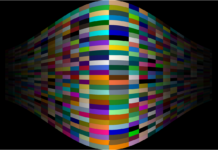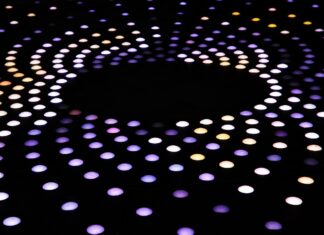Robotic Pollinator Drones: Mimicking Nature’s Ingenious Design for Ecological Balance
The intricate interplay between flora and fauna has been an essential component of Earth’s ecosystems for millions of years. Pollination, the process by which pollen grains are transferred from the male reproductive organs of flowers to the female counterparts, is a critical biological phenomenon that enables the reproduction of flowering plants. This natural interaction facilitates genetic diversity, maintains biodiversity, and supports the production of fruits and seeds. However, in recent decades, various factors including habitat loss, pesticide use, and climate change have significantly impacted the populations of natural pollinators, such as bees and butterflies. In response to this ecological challenge, scientists and engineers have turned to technology to develop innovative solutions, giving rise to Robotic Pollinator Drones – autonomous flying devices designed to replicate the pollination process and help secure agricultural productivity and environmental sustainability.
Robotic Pollinator Drones represent a remarkable marriage of biology and engineering, drawing inspiration from the intricate mechanics of natural pollinators while harnessing cutting-edge technological advancements. These drones are designed to mimic the behavior of bees, butterflies, and other insects that have traditionally played a vital role in pollination. The underlying concept involves the development of robotic systems capable of pollen collection from male flower parts (anthers) and subsequent deposition onto the female parts (stigmas) of flowers, facilitating fertilization and fruit production. The integration of artificial intelligence, machine learning, advanced sensors, and biomimetic design has enabled these drones to navigate through complex natural environments, recognize different plant species, and execute delicate pollination maneuvers with precision.
One of the most significant driving forces behind the development of Robotic Pollinator Drones is the alarming decline in natural pollinator populations. Bees, for instance, are crucial pollinators for a wide variety of crops, contributing to global food security and biodiversity. However, factors such as habitat loss, pesticide exposure, diseases, and climate change have led to dramatic declines in bee populations worldwide, a phenomenon known as colony collapse disorder. The consequences of this decline are far-reaching, as a significant portion of the world’s food production depends on insect pollination. To address this challenge, researchers have turned to technology, aiming to create an artificial pollination solution that can supplement the work of declining insect populations and ensure the continued productivity of crops.
Robotic Pollinator Drones offer several potential advantages that could reshape the future of pollination and agriculture. By their very design, these drones can operate autonomously, tirelessly working day and night, regardless of weather conditions. This continuous operation can significantly enhance the efficiency of pollination, potentially leading to increased crop yields. Moreover, these drones have the potential to work in diverse environments, including regions where certain crops would not naturally be pollinated due to the absence of suitable insect pollinators. This adaptability could expand agricultural possibilities and contribute to addressing global food security challenges.
The development of Robotic Pollinator Drones involves intricate multidisciplinary collaboration. Biologists, engineers, roboticists, and agronomists work together to ensure that these drones not only mimic the pollination process but also integrate seamlessly into existing agricultural practices. Central to this integration is the ability of the drones to recognize different plant species and perform pollination operations without causing damage to the plants or the delicate flower structures. This requires advanced sensors, computer vision, and machine learning algorithms that allow the drones to identify flowers, assess their reproductive readiness, and execute pollination maneuvers with precision.
A key technical challenge in designing these drones is the development of effective pollen collection and deposition mechanisms. Natural pollinators have evolved specific adaptations for pollen collection, transport, and deposition, often involving intricate body structures such as hairy legs and specialized mouthparts. Robotic Pollinator Drones need to replicate these functions in an artificial and efficient manner. Researchers are exploring various approaches, including using soft robotics and biomimetic design principles to create mechanisms that can gently and effectively collect and transfer pollen between flowers.
Furthermore, the issue of pollen transfer fidelity comes into play. Natural pollinators inadvertently transfer pollen from one flower to another while foraging for nectar or pollen. This cross-pollination is essential for maintaining genetic diversity within plant populations. Robotic Pollinator Drones must achieve a similar level of cross-pollination to ensure the health and diversity of plant species. This challenge requires careful programming of flight patterns, optimization of pollen carrying capacities, and the development of strategies that mimic the random yet purposeful movement of insects.
As with any emerging technology, there are also considerations related to ethical, ecological, and economic aspects. One concern is the potential impact of robotic pollination on native pollinator populations. If not implemented thoughtfully, these drones could potentially outcompete or disrupt the natural pollination process, further endangering already vulnerable species. It’s crucial that the deployment of Robotic Pollinator Drones is accompanied by thorough ecological assessments to ensure that their introduction doesn’t exacerbate existing ecological imbalances.
In conclusion, Robotic Pollinator Drones stand at the crossroads of biology, engineering, and environmental stewardship. As the world grapples with the challenges posed by declining pollinator populations and the need for sustainable agricultural practices, these drones offer a glimpse into a technologically assisted future where humans and machines collaborate to ensure food security and ecological balance. While significant hurdles remain, from perfecting the mechanics of pollination to addressing potential ecological impacts, the development of Robotic Pollinator Drones underscores humanity’s ability to innovate and find solutions that bridge the gap between nature and technology. Through careful research, thoughtful design, and responsible implementation, these drones could play a vital role in shaping a more resilient and sustainable future for agriculture and ecosystems alike.
Biomimetic Design:
Robotic Pollinator Drones are engineered with biomimicry in mind, closely imitating the physical attributes and behaviors of natural pollinators such as bees and butterflies. This design approach enables effective interaction with flowers and pollen transfer.
Autonomous Navigation:
These drones are equipped with advanced navigation systems that allow them to autonomously maneuver through complex environments, locate flowers, and navigate around obstacles, ensuring efficient pollination operations.
Computer Vision:
Integrated computer vision technology enables the drones to identify different types of flowers, assess their reproductive readiness, and accurately target pollen deposition, ensuring precise pollination.
Pollen Collection Mechanisms:
The drones are equipped with specialized mechanisms for gentle and efficient pollen collection from the anthers of flowers. These mechanisms replicate the pollen collection behaviors of natural pollinators.
Pollen Deposition Systems:
To mimic the pollination process, the drones have mechanisms to deposit collected pollen onto the stigmas of flowers. These mechanisms ensure controlled and effective pollen transfer.
Cross-Pollination Strategies:
Like their natural counterparts, Robotic Pollinator Drones incorporate strategies for cross-pollination, ensuring genetic diversity among plant populations and fostering healthy ecosystem dynamics.
Advanced Sensors:
These drones are equipped with sensors that provide real-time data on environmental conditions, including temperature, humidity, and light. This data helps optimize flight patterns and pollination activities.
Artificial Intelligence (AI):
AI algorithms enable the drones to make intelligent decisions based on the information gathered from sensors and cameras. They can adapt to changing conditions and optimize pollination strategies over time.
Weather Resistance:
Robotic Pollinator Drones are designed to operate in various weather conditions, allowing them to continue pollination activities even during unfavorable weather, such as rain or wind.
Ecological Monitoring:
Some drones incorporate sensors for monitoring the ecological impact of their operations. This feature helps ensure that the deployment of robotic pollinators does not negatively affect native pollinator populations or ecosystem dynamics.
These key features collectively contribute to the effectiveness, efficiency, and ecological responsibility of Robotic Pollinator Drones, making them a promising technological solution for addressing the challenges posed by declining pollinator populations and ensuring sustainable agricultural practices.
Robotic Pollinator Drones: Pioneering a Technological Paradigm Shift in Pollination
The world stands at a critical juncture where the delicate balance of ecosystems is under threat due to a myriad of factors, including climate change, habitat loss, and the alarming decline of pollinator populations. In this context, the emergence of Robotic Pollinator Drones represents a profound technological advancement that has the potential to revolutionize the way we approach pollination, agriculture, and environmental conservation. These futuristic drones, marrying the intricacies of natural pollinators with cutting-edge engineering and artificial intelligence, offer a glimpse into a harmonious coexistence between technology and nature.
The decline of pollinators, particularly bees, has sounded alarm bells across the globe. Pollination, a fundamental ecological process, is not merely about the transfer of pollen; it is a cornerstone of biodiversity, a linchpin that sustains the interconnected web of life on Earth. Insects, birds, and bats have diligently executed this task for millions of years, contributing to the reproduction of plants that provide food for countless species, including humans. However, the fragile pollinator populations are besieged by habitat fragmentation, pesticide exposure, diseases, and a changing climate. As these vital organisms struggle to adapt to new challenges, food security, ecosystem stability, and genetic diversity hang in the balance.
Enter the realm of innovation where technology, inspired by nature’s ingenious designs, offers a glimmer of hope. Robotic Pollinator Drones, although seemingly at odds with the organic world, carry the potential to be ecological saviors. The idea of using machines to pollinate crops might appear radical, but it underscores humanity’s relentless pursuit of solutions that bridge the gap between the ecological crisis and technological ingenuity. The challenge lies not only in creating machines that mimic the pollination process but also in seamlessly integrating them into the existing tapestry of life.
The development of Robotic Pollinator Drones is a testament to the intricate interplay between biology and engineering. To replicate the delicate touch of a bee transferring pollen from anther to stigma, engineers delve into the realm of biomimicry. Studying the microstructures of pollinators’ bodies, the drones are designed with soft, gentle appendages that mirror the bristles and hairs responsible for pollen collection and deposition. This level of precision in design reflects a deep appreciation for the nuanced mechanics of nature.
Yet, the journey doesn’t stop at design; it extends to the realm of autonomy. Robotic Pollinator Drones need to navigate through dynamic environments with the grace and agility of their biological counterparts. This calls for sophisticated algorithms, harnessing the power of artificial intelligence, to process visual data, interpret environmental cues, and make split-second decisions. Such autonomy enables these drones to weave through fields of blossoms, identifying receptive flowers and ensuring accurate pollen transfer.
The implications of Robotic Pollinator Drones extend far beyond individual flowers. They have the potential to revolutionize the agricultural landscape. Traditionally, crop pollination has heavily relied on migratory beekeeping, where beehives are transported across regions to pollinate crops. However, this practice has become increasingly unsustainable due to the aforementioned challenges faced by bees. Robotic Pollinator Drones offer a localized and precise approach to pollination. They can be deployed precisely where needed, optimizing pollination without the ecological and logistical complexities associated with relocating bee colonies.
Furthermore, these drones could expand the frontiers of agriculture itself. Crops that previously faced pollination limitations due to geographical constraints or the absence of suitable pollinators could now thrive with the assistance of technology. Regions with harsh climates or inhospitable conditions might no longer be barriers to cultivation, as drones can provide the crucial service of pollination without the need for a complex ecosystem of natural pollinators.
However, this technological utopia is not devoid of challenges and ethical considerations. The introduction of Robotic Pollinator Drones raises questions about unintended consequences. Could these machines disrupt the natural behaviors of native pollinators or lead to unforeseen ecological imbalances? Striking a balance between innovation and preservation requires rigorous ecological assessment and responsible deployment strategies. Additionally, the economic feasibility of integrating these drones into existing agricultural systems needs careful evaluation. From production and maintenance costs to scalability and long-term sustainability, these aspects play a crucial role in determining the widespread adoption of such technology.
In the grand tapestry of life on Earth, pollination is a thread that weaves species together. Robotic Pollinator Drones, while a remarkable feat of engineering, also symbolize our collective responsibility to safeguard the delicate relationships that sustain us. As we venture into a future where technology and nature collaborate, the success of these drones will not solely be measured by their technical prowess, but by their ability to harmonize with the rhythms of life. The challenge, then, is not merely to engineer machines, but to engineer a future where humanity flourishes alongside the diverse array of species that call our planet home.


















